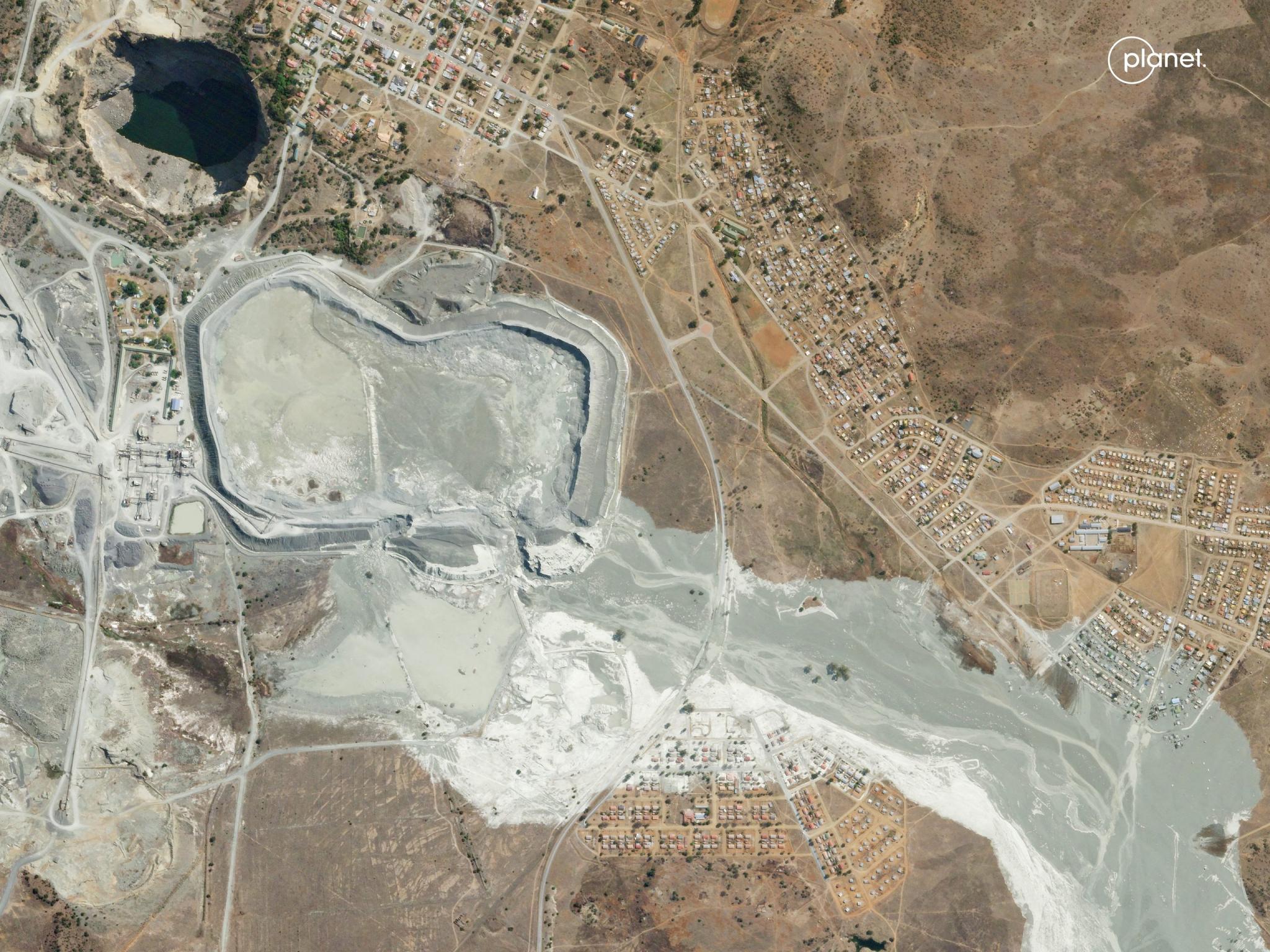Satellite Data Revealing Why Dam Tailing Failures Occur
Image above: SkySat image of tailings dam failure in Jagersfontein, South Africa, captured September 12, 2022, the day after the failure. Global conversations around the safety of tailings dams – infrastructure where mining waste is meant to be contained – have been ongoing for the last few years. In 2019, the failing of one tailings dam in Brumadinho, Brazil, led to the deaths of 270 people, sparking increased intensity in the world-wide concern around the safety of these structures. Then in 2022, next to a diamond mine, the tailings dam also failed in Jagersfontein, South Africa, where the subsequent mudflow caused the death of one person and the destruction of several homes. Tailings dams are now under increased scrutiny in regards to construction standards, and researchers have demonstrated the use of satellite data to monitor if tailing dams have sound construction and management practices. For the tailings dam in Jagersfontein, South Africa, analysts from the University of the Witwatersrand in South Africa leveraged publicly available satellite data, such as Landsat 8 and Sentinel-2, alongside our PlanetScope and SkySat data for their analysis. “The data suggest a construction sequence that is inconsistent with sound tailings management practices: asymmetric deposition, erosion gullies, large ponds and absence of beaches,” wrote the authors in their paper. The authors used PlanetScope data in the days before and after the dam failure to observe the flow of the tailings runout and then conducted a sediment analysis to see the changes within the water. They also tasked our SkySat satellites following the failure to capture the immediate impacts from above. This high resolution data helped the researchers understand the post-failure geometry of the dam and estimate the tailings amount pre- and post-failure. Overall, their research explored the use of both public and commercially available satellite data to monitor proper tailings dam construction practices for the future. The full study can be found in Nature - Scientific Reports. [caption id="attachment_151710" align="alignnone" width="791"]



Ready to Get Started
Connect with a member of our Sales team. We'll help you find the right products and pricing for your needs





